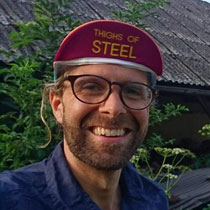WHAT GETS MEASURED GETS MANAGED
“Dry land forests are everywhere, but nowhere,” Atmadja says. “They are everywhere in the landscape – 80 percent of Ethiopia’s forests are on dry land, but they are nowhere in terms of research, regulation, and funding.”
Trees for carbon sequestration, for example, is well-documented across scientific research, and so governments draw a simple line from the threat of climate change and protecting forests that sequester and keep a lot of carbon.
Because of its sparse nature, dry land forests sequester much less carbon than dense tropical rainforests. Because of this, the lion’s share of money for forest conservation is poured into rainforests initiatives – despite the ubiquity of dry forests on the ground, and their importance to help people adapt to a changing climate.
Atmadja and her colleagues’ new study goes some way to correcting this imbalance. Until now, it has not been easy for conservationists to define the extent of Ethiopia’s dry land forests. No one – not academics, not local communities, not even the government – knew much at all about the millions of hectares of these unheralded landscapes. Atmadja et al’s new research hopes that now everyone will know and notice. And what gets measured gets managed.
With the knowledge that 80 percent of Ethiopia’s forests are undermanaged, Atmadja hopes that her paper will provide “ammunition” to conservationists who demand more protection for dry forests
Indeed, the future of Ethiopia may depend on it.
“Dry forests are everywhere, but that will become nowhere if we do not do more to protect them”
“INVISIBLE” DRY FORESTS
Atmadja describes the economic contribution of dry forests as “invisible”. Her colleague, Dr Abeje Eshete, director of the Ecosystem Management Research Directorate of the Ethiopian Environment and Forest Research Institute, explains that right now, only a few products can be harvested from dry forests, including honey, bamboo and frankincense.
This limitation is not down to the paucity of dry forests, but an artificial restriction imposed by the government who are concerned about the sustainability of the harvest. Eshete, Atmadja and their colleagues are working hard to show that sustainable harvests are not only possible, but an opportunity for economic growth.
“Ethiopia is a net importer of forest products,” Eshete says. “But dry forest resources contribute more in exports. We think there is huge potential here if we can manage the production legally and sustainably.”
Unfortunately, dry forests are still undervalued, and the country lost over 1 million hectares in the period 2000-2013. “Dry forest is difficult to rehabilitate, so it is best to avoid deforestation in the first place,” Atmadja says.
Most of the dry forests are owned by the Ethiopian state, but Eshete explains that the government exerts only weak control over the resources. “The dry forests are subject to open access,” he says, “and that is why deforestation becomes a problem.” Atmadja adds: “Dry forests are everywhere, but that will become nowhere if we do not do more to protect them.”
“If you do not have dry forests, rain water moves faster across the landscape...This means less water recharging the rivers, and more eroded soil that fills up dams prematurely. You will have more blackouts”
“IF YOU DO NOT HAVE DRY FORESTS, YOU DO NOT HAVE WATER”
The Ethiopian economy is one of the fastest growing in the world and Atmadja wants to draw a firm connection between the hydroelectric power plants set to make up 90 percent of Ethiopia’s electricity supply and the dry land forests that protect the water basins that feed the rivers that power the dams.
It is this vital contribution of the dry forests that Atmadja calls “invisible”. For example, the Grand Ethiopian Renaissance Dam, which will become the seventh largest hydroelectric dam on the planet when finished, is located in the region of Benishangul-Gumuz, where 98 percent of the tree cover is dry forest.
“We always hear about the dams, but never about the forests that protect the watersheds,” Atmadja says. But, of course, without the trees, there would be no water to power the dams. The companies that use the water pay for access to the water supply, but they do not pay to help protect the watershed that ensures the water supply.
“If a country relies so much on hydropower, how can it not protect their watersheds?” Atmadja asks. “We can do so much more.”
Indeed, Forests News’ interview with Dr Atmadja came at a time of well reported electricity blackouts in Ethiopia.
“If you do not have dry forests, rain water moves faster across the landscape,” she warns. “This means less water recharging the rivers, and more eroded soil that fills up dams prematurely. You will have more blackouts and shorter life spans of dams.”













